“This is a three-shot hole to most golfers,” Alister MacKenzie wrote in 1932 about Augusta National’s par-5 15th hole. Only a “skillful and courageous player,” the architect claimed, would be able to reach the green in two.
Today, however, we see No. 15 as a two-shot hole, at least as far as the Masters is concerned. We expect that top players will lay up only after errant or unusually short drives. This expectation is so entrenched that many fans objected when, for three days of the 2022 tournament, the 15th hole functioned more or less as MacKenzie described it 90 years ago: a three-shotter that a subset of golfers can turn into a two-shotter.
It’s understandable that people would miss the spectacle of nearly every player in the Masters field having a chance for eagle toward the end of the round. But these viewers may have overlooked the equally entertaining, if quieter, strategic drama that played out when the original intentions of the hole were briefly restored last week.
◊
The 15th hole at Augusta National was initially 485 yards long. The green was fronted by the loop of a stream, not a pond, and the fairway consisted of an open field with a copse of pines in the middle. The land rose from the tee before running downhill to the water, and sloped from right to left throughout.
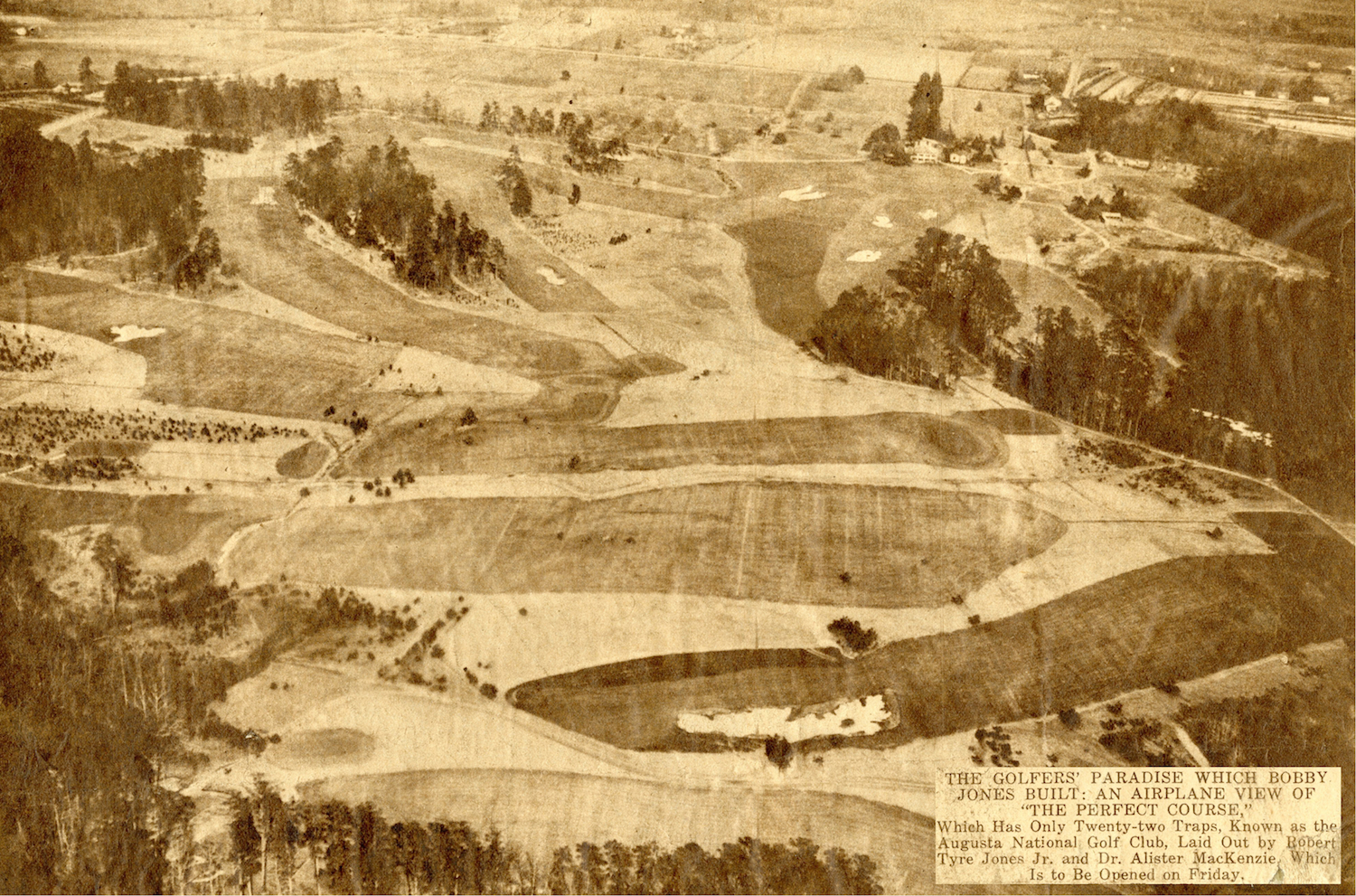
An early-1930s aerial photo of Augusta National. The 15th hole is the wide one running right to left in the middle. Courtesy of the Alister Mackenzie Institute.
As designed by Alister MacKenzie and Bobby Jones, No. 15’s primary defenses were length and topography. Even the best players, using the equipment of the day, were hard pressed to cover 485 yards on a sideslope in two shots. Gene Sarazen’s famous albatross 2 in the 1935 Augusta National Invitation Tournament was accomplished with a 253-yard drive and a 232-yard spoon shot—mighty strikes for the day.
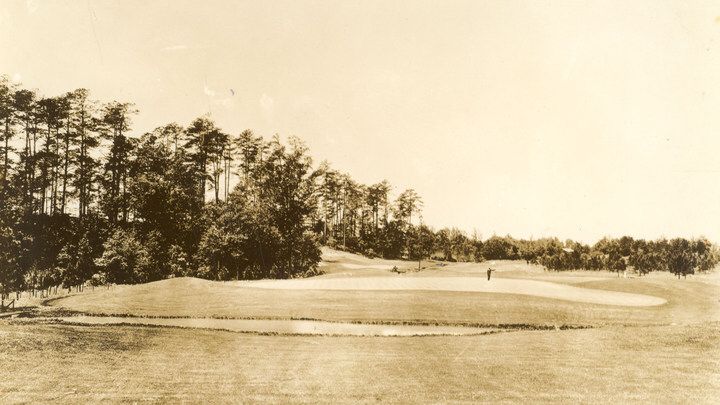
An early-1930s photo of the 15th (then the sixth) green at Augusta National
By the 2000s, 15 had turned into a different kind of hole. The top players in the Masters had come to treat it as essentially a par 4: if they hit a decent drive, there was no question that they would go for the green in two. The most important hazards, aside from the water, were now trees, which the club had planted in great quantities on both sides of the corridor. If players hit their drive into the pine-straw-carpeted groves left or right, they had to lay up. If they found themselves behind the tall pines in the left half of the fairway but could still bend a right-to-left shot toward the green, they had a more nuanced risk-reward judgment to make. In general, though, competitors in the modern Masters didn’t have to do much thinking in the 15th fairway.
Yet the hole was still exciting because of how treacherous the second shot was. The green, shallow and severely canted, was effectively on an island. Miss short and you’d end up in the water in front; miss long and risk skidding down a bank into another pond. There were no spacious places to bail out. So the approach to No. 15 was always a moment of tension in the final round, a gauntlet that any prospective winner had to pass through. And it produced some of the most rewatchable Masters moments of the 21st century: Tiger Woods in 2011, Sergio García in 2017.
But in the end, the drama of the 15th hole was one of execution, not strategy. Modern driving distances had mostly eliminated the need to weigh risk and reward on the second shot.
-
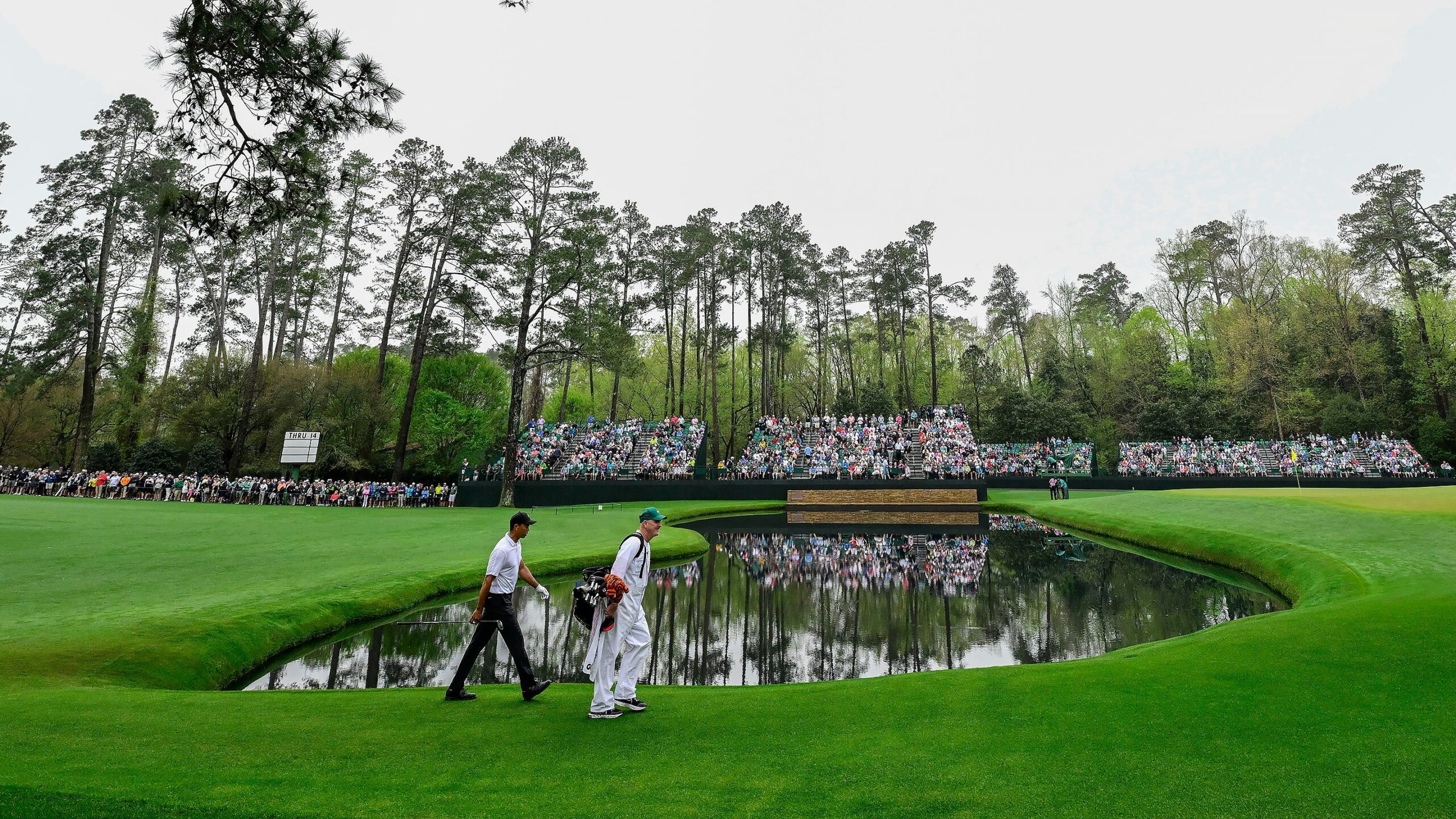
The 15th hole at Augusta National (courtesy of the Masters Tournament)
-
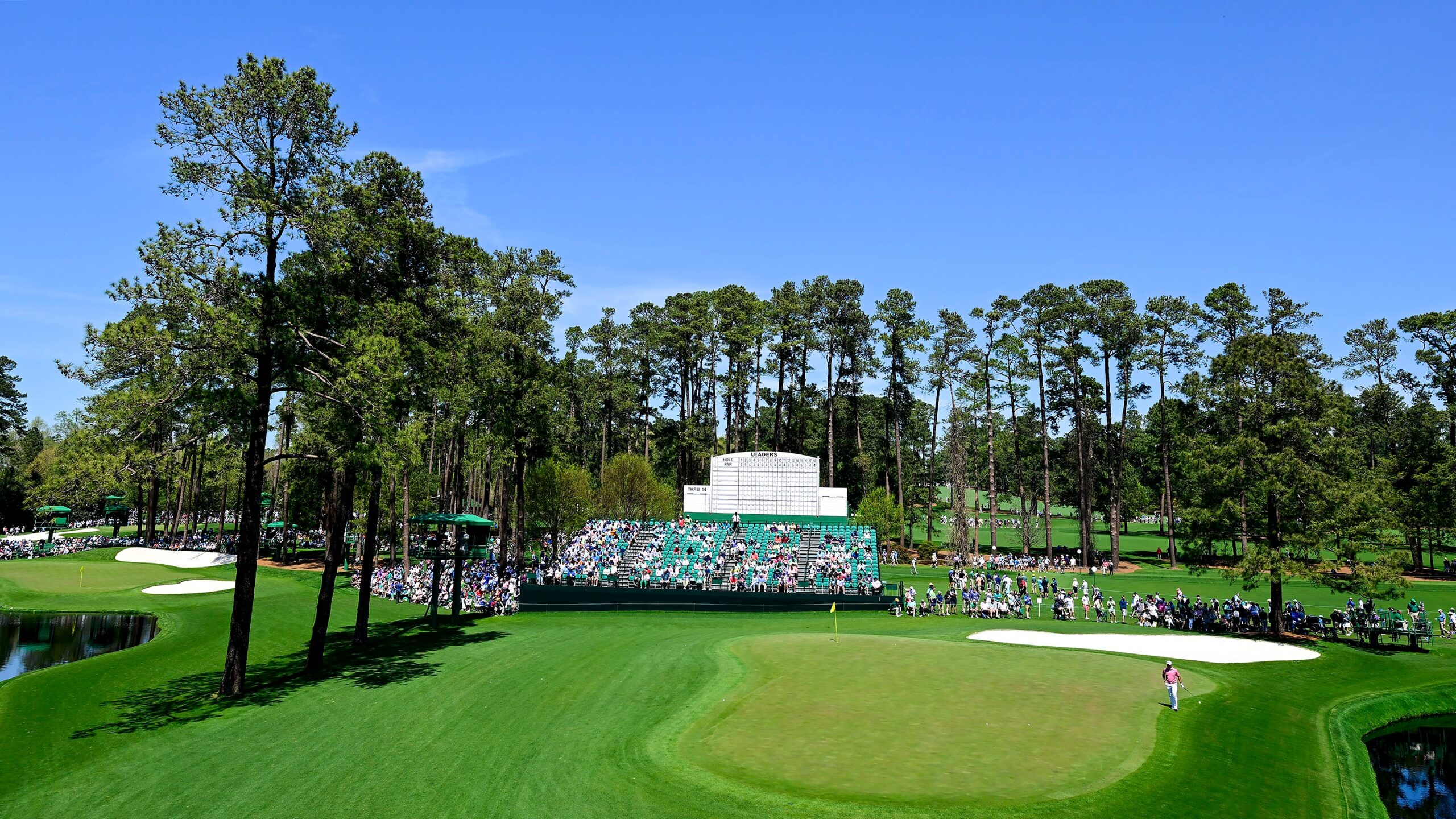
The 15th hole at Augusta National (courtesy of the Masters Tournament)
-
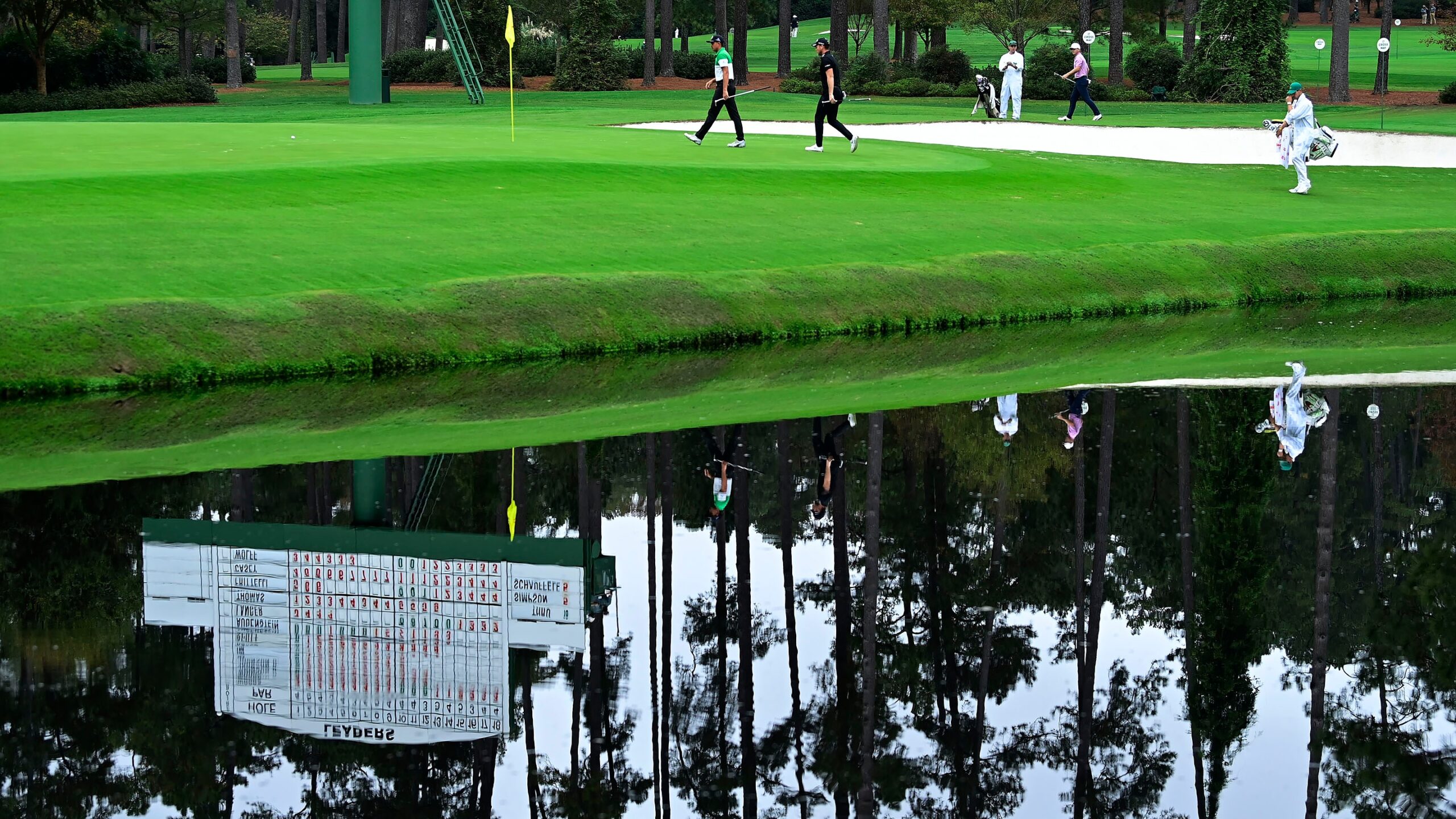
The 15th hole at Augusta National (courtesy of the Masters Tournament)
◊
For this year’s Masters, Augusta National attempted to recover the strategic dimension by moving the teeing ground on No. 15 back. The hole would now tip out at 550 rather than 530 yards. After early-week practice rounds, several players noted that they had hit hybrid or 5-wood into the green instead of the typical mid-ron. Some shorter-hitting players, including Kevin Kisner, said they had been forced to lay up.
In the first three rounds of the tournament, the new length of No. 15 was accentuated by a western wind blowing into the players’ faces. On Thursday, only 19 out of 90 in the field (21%) tried for the green in two. As the wind strengthened on Friday and Saturday, tournament organizers moved the tee blocks up to 536 and 527 yards, respectively, allowing 29% of the field to go for it in round two and 35% in round three.
All the while, a growing chorus of fans, pundits, and writers accused Augusta National of taking the fun out of the 15th hole. A few players grumbled, too. After the first round, Patrick Cantlay was asked whether his decision to lay up on the 15th hole was due to wind or design changes. He replied, “Well, the design change would be you can’t get it there. It’s too far…. Maybe on a downwind day you could get it there, but not into the wind like it was today.” It’s worth noting that on Friday, when the wind was stronger, Cantlay hit his second shot over the back of the green.
Still, there’s no doubt that the combination of the additional yardage and the western wind changed something essential about No. 15. Players no longer felt an obligation to attack the green from uncomfortable distances. In that limited sense, the hole lacked its usual capacity to produce excitement in the first three rounds of the event.
But in another sense, No. 15 was more strategically compelling on the windy days than it had been in decades. Only Thursday, eventual champion Scottie Scheffler spoke of the risk-reward dilemma that the hole presented. “On 15 today,” he said, “I had an opportunity to hit a really cool shot that seemed like a lot of fun…. I could have hit a high, soft, hook 3-wood, and the lie is set up for it, which is why I was going to try it. Luckily I’ve matured a little bit. If it was a practice round, I 100 percent would have hit the shot. But today I laid up and hit a decent wedge and missed the putt.”
The calculations Scheffler describes here—of risk versus reward, restraint versus aggression—may not show up well on TV, partly because they aren’t covered in much depth by major-network broadcasts, but they are at the core of the strategic game MacKenzie and Jones promoted. So on Thursday, Friday, and Saturday, No. 15 at Augusta National played roughly as it was intended to: a test of not only ball-striking but also tactics and mental wherewithal.
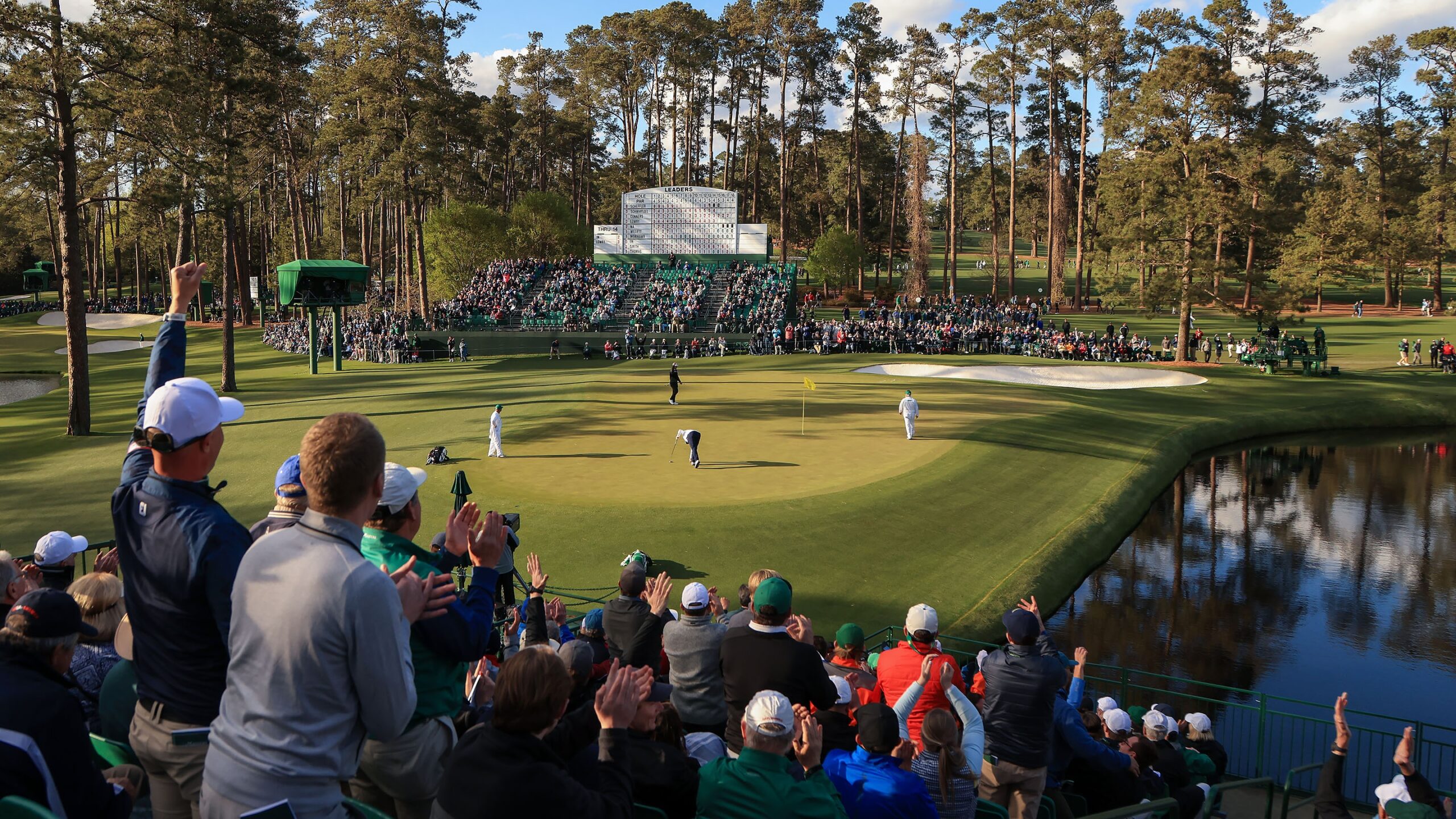
View from left of the 15th green (courtesy of the Masters Tournament)
The hole also examined short-approach play more consistently. Since laying up was more common, more players had to deal with the famously intimidating 80- to 120-yard third shot from a downhill lie to a green that spurned anything less than impeccable distance and spin control. Because of the emphasis on this shot in the first three rounds, elite wedge players stood out. For instance, Cameron Smith, who ranks third on the PGA Tour in proximity to the hole from 50 to 125 yards, birdied No. 15 on all three days.
On Sunday, when the wind died down, the familiar 21st-century dynamics of the hole mostly returned. With the tee blocks set at about 544 yards, 33 of 52 players (63%) tried to reach the green in two. The median drive traveled 303.5 yards, compared to 274.5 yards the day before, and the median length of second shot was 242 yards, well within the go-zone for most cut-makers at the Masters. Those who laid up generally did so because of tree trouble. Only two who didn’t have trees in their way elected not to go for it.
So on the updated 15th hole, Masters competitors may hit longer clubs into the green, but not many of them, in normal conditions, will lay up. This state of affairs will continue until either the governing bodies change the rules for driver and ball technology or Augusta National puts the 15th tee on top of the 10th green.
◊
Down the stretch in this year’s Masters, No. 15 delivered yet another capital-M Moment. Scottie Scheffler, up by five shots, crushed his drive down the middle of the fairway. When his ball landed, however, another, less-discussed alteration to the hole came into effect. Between the 2021 and ’22 tournaments, Augusta National had tilted the fairway more to the left. Rory McIlroy summed up the impact of this change in his press conference on Thursday: “You’re going to get stuck behind those trees more.”
That’s what happened to Scheffler. His ball kicked behind the pines in the fairway, and while he had 223 left, a mere 5-iron for him, he contemplated laying up. To go for it, he would need to aim at the right edge of the bunker to the right of the green. “If I push it,” Scheffler explained afterwards, “it goes in the crowd; and if I pull it, it will go on the green.”
He pulled it, apparently. His ball landed 20 feet right of the pin and rolled just over the back edge.
Back-to-back birdies. Scottie Scheffler now leads by five with three holes to play. #themasters pic.twitter.com/0e6M3j9MtP
— The Masters (@TheMasters) April 10, 2022
It was a surprising, spine-tingling shot, catching even on-course reporter Dottie Pepper off guard. Pepper, who doesn’t typically botch club-selection calls, had reported that Scheffler was laying up with a 9-iron.
Scheffler’s caddie Ted Scott had encouraged the aggressive play, and as the pair walked past the layup zone in the 15th fairway, Scheffler said, “Hey, man, thanks for that. I really don’t want to hit this wedge shot right now.”
There are two ways to look at this story, both valid. One, it’s heartening that the 15th hole at Augusta National, nearly 90 years into its tenure at the Masters, still forces the world’s best golfers to make tough decisions and hit great shots. Two, it’s sobering to realize that Scheffler’s hesitation was almost entirely due to changes that the club has made to the hole’s original design: the addition of trees and the re-contouring of the fairway that brought those trees more into play.
This is the quandary that Augusta National faces in trying to preserve both major-championship challenge and Golden Age heritage. The more the club bolsters the former, the more it tends to lose the latter.
More Masters coverage from The Fried Egg team:
Tiger Woods: Limited but hardly lost in amazing comeback
Is Augusta National Turning Over a New Leaf?
The Art Behind Augusta’s Roars: Focal points in Alister MacKenzie’s routings
The 8th hole at the Masters reveals the limitations of sorting golf courses into buckets
New angles and iconic shots: An Augusta Walk with My Camera


 by
by 
